Hikers and mountaineers are stumbling on mysterious ancient objects in the Swiss Alps, and their discoveries are keeping archaeologists busy.
From the Iron Age to ancient Rome to the Middle Ages, people traveled across the Alps’ icy mountain passes with cows, mules, oil, wine, skis, weapons, and more.
Their lost or abandoned belongings are now surfacing as the mountains’ glaciers melt, providing clues about past civilizations and eras.
Archaeologists gave Business Insider an inside look at some of their most mysterious and most revealing discoveries.
Melting glaciers in the Swiss Alps are uncovering objects that humans have left behind over the ages.
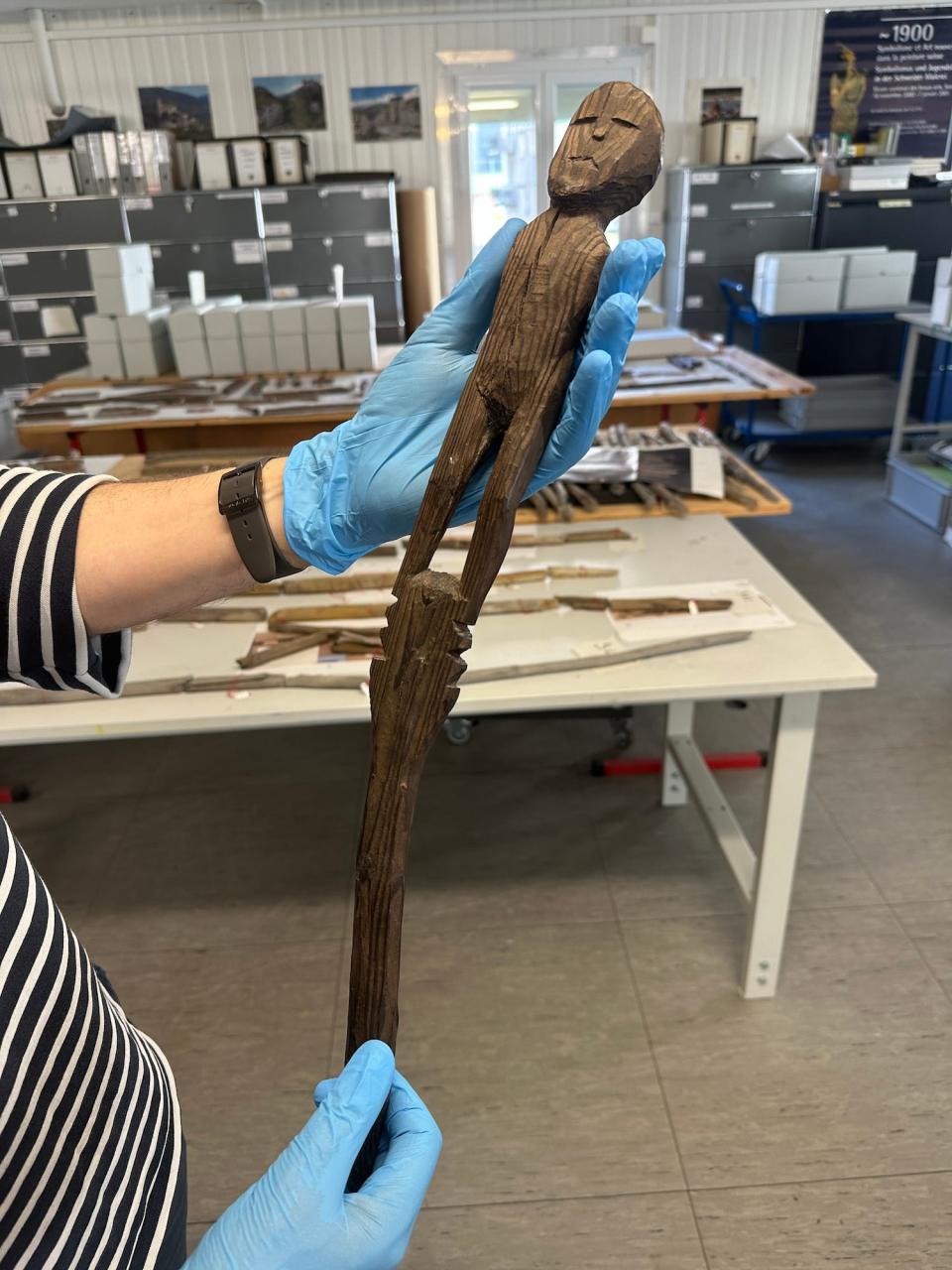
Switzerland has more glaciers than any other European country, and they’re receding quickly as global temperatures rise. In 2022 and 2023, the country lost 10% of its total glacier volume, according to the Swiss Academy of Sciences.
People who find unique artifacts lying on the ice sometimes take them as keepsakes.
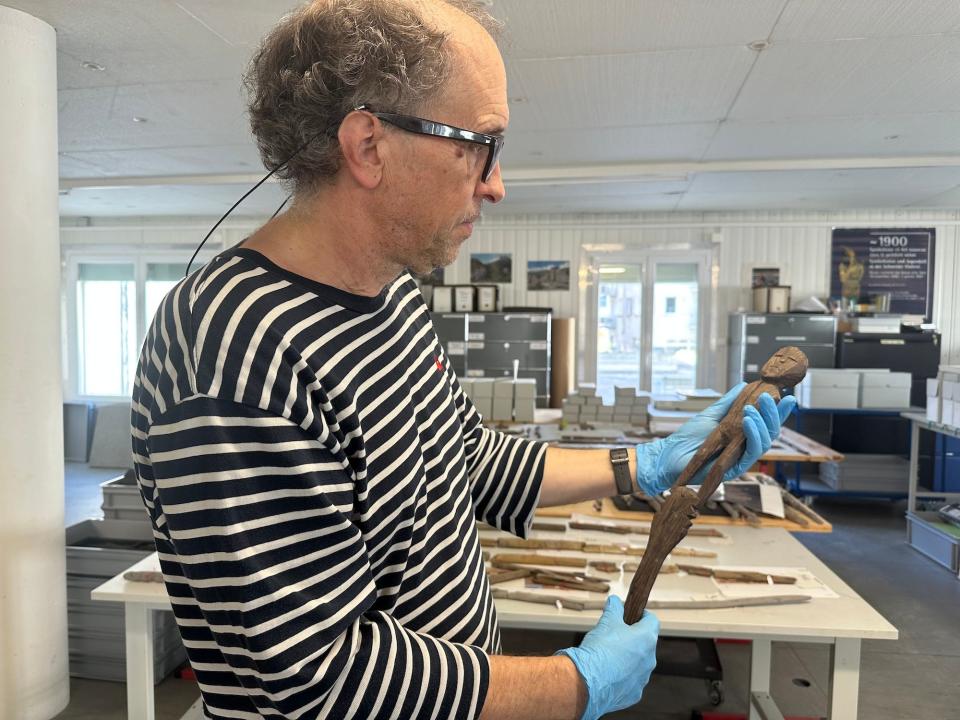

This wooden statue, for example, hung on a mountaineer‘s living-room wall for nearly 20 years before Pierre-Yves Nicod, a museum curator, saw an old email about it and reached out.
The mountaineer found the statue soaked in meltwater in 1999 and wiped it down with modern cleaning products, which could have damaged the ancient object.
Still, after he donated it in 2018, archaeologists managed to date the wood to the first or second century BC — the Iron Age.
As the ice melts and discoveries accelerate, archaeologists in the town of Sion collect these objects for research.
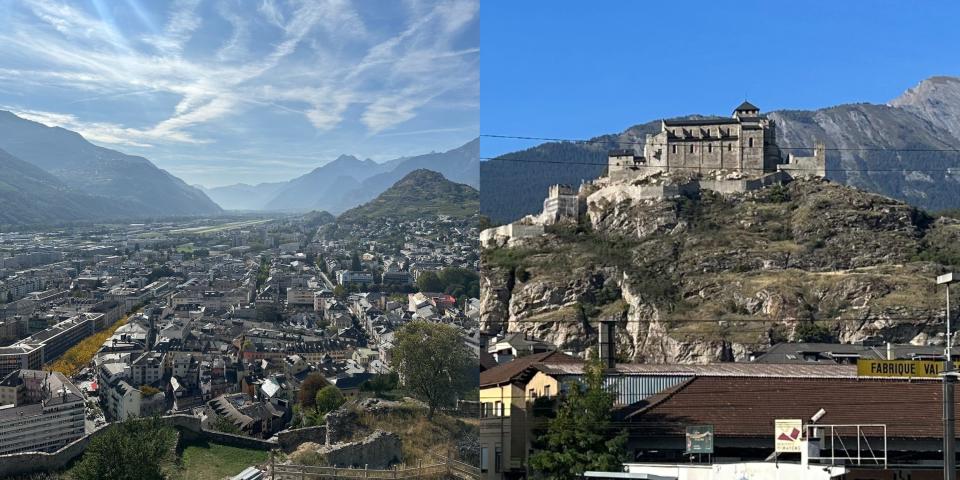

The Valais History Museum sits atop a steep hill towering in the center of town. It’s at the forefront of the new field of glacial archaeology. The museum has even sent its artifacts on a traveling glacial-archaeology exhibit.
The archives, where additional artifacts are kept and studied, are in a discrete building in a different part of town. Glacial findings are hidden in a giant freezer in the basement and rooms full of bins.
In the museum’s archives, researchers are studying new objects closely.
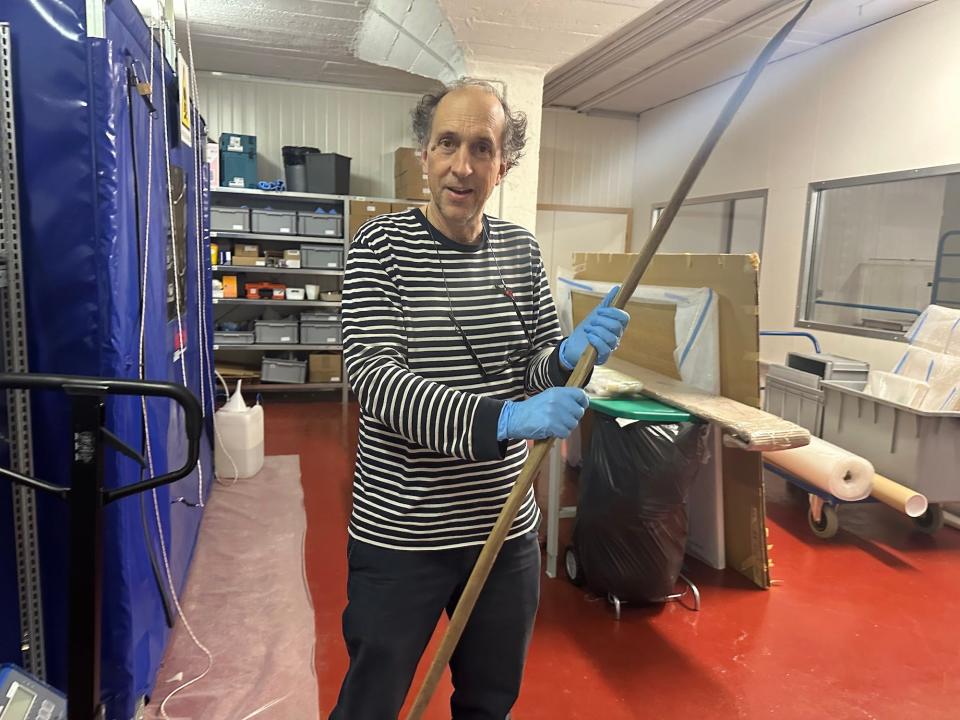

Findings from glaciers are disclosing more about human history and ancient economies in the region.
But it’s a challenge. Up on the glacier, there’s often nothing else associated with the artifact. There are no structures, roads, ancient cities, or other objects that can offer clues about an artifact’s origins or purpose.
“It’s one of the difficulties of glacial archaeology that we find these objects in the ice, and therefore out of all archaeological context,” Nicod said.
Business Insider spoke with Nicod in French and translated his words into English.
Some discoveries are total mysteries, such as these sticks.
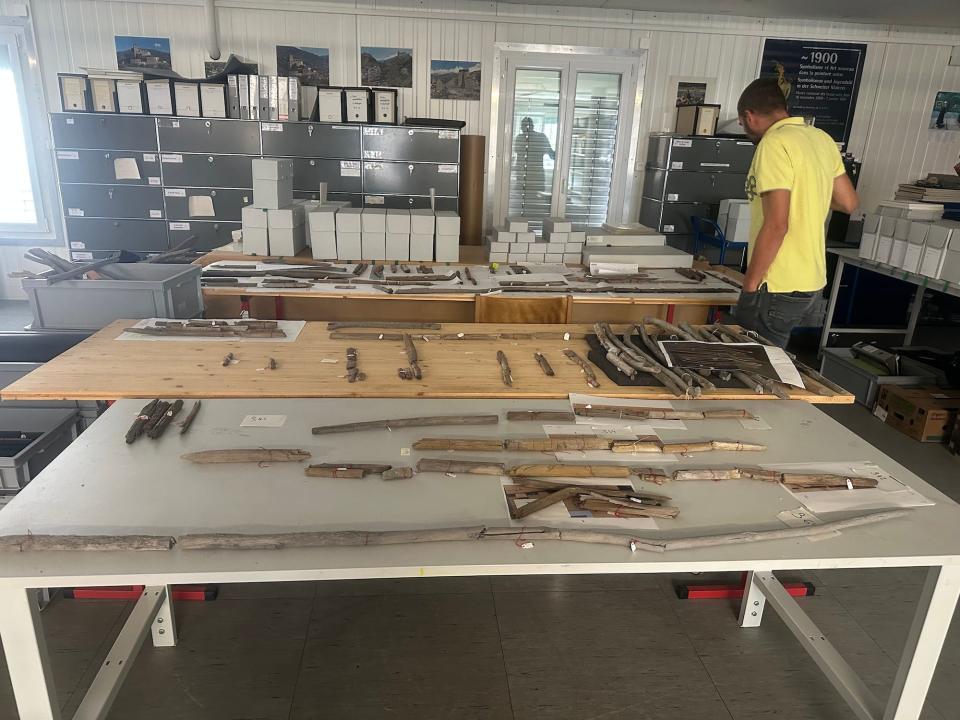

All these sticks come from the same pass, or “col,” between mountain peaks. Since it’s far above the tree line, the sticks wouldn’t be there unless humans brought them.
Some of the sticks date to the time of the ancient Romans, who used the Celtics as guides over the glaciers and through the Alps, Romain Andenmatten, a local archaeologist, said. He thinks the Celtics used sticks to mark the passage.
But the archaeologists were still working on radiocarbon-dating the sticks. And they continue to find more sticks each season when they visit the glacier.
“We go back, we go back, and we still find wood,” Nicod said. “This is really a research in progress.”
Archaeologists still aren’t sure what the little wooden statue was for, either.
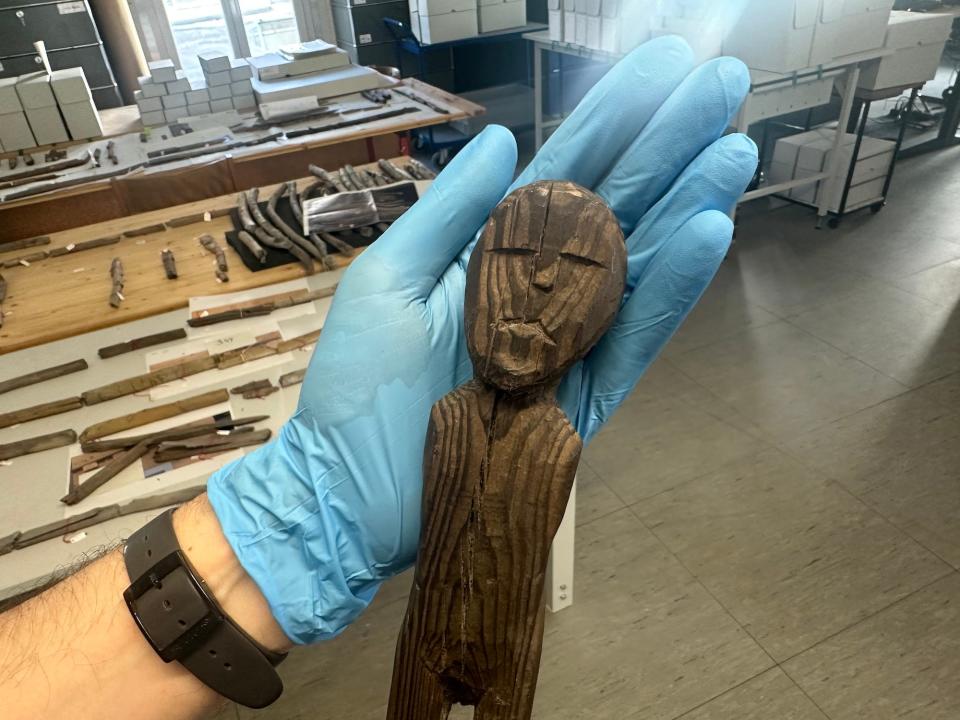

Nicod speculated that when people walked across the col, they placed this object there for “divine protection.” Or maybe it marked a border. Maybe someone simply lost it on their long mountain trek.
Like the statue, many glacier artifacts are made of organic materials such as wood, plant materials, and leather — things that don’t survive well at lower altitudes where they aren’t frozen.
That means artifacts such as these aren’t common in archaeological digs. They don’t have analogs in ancient cities or tombs — places that provide the context to figure out an item’s purpose.
In the case of this statue, “We have no comparison,” Nicod said.
Other discoveries, such as these valuable belongings of a 17th-century man, shed light on the economy of the ancient Alps.
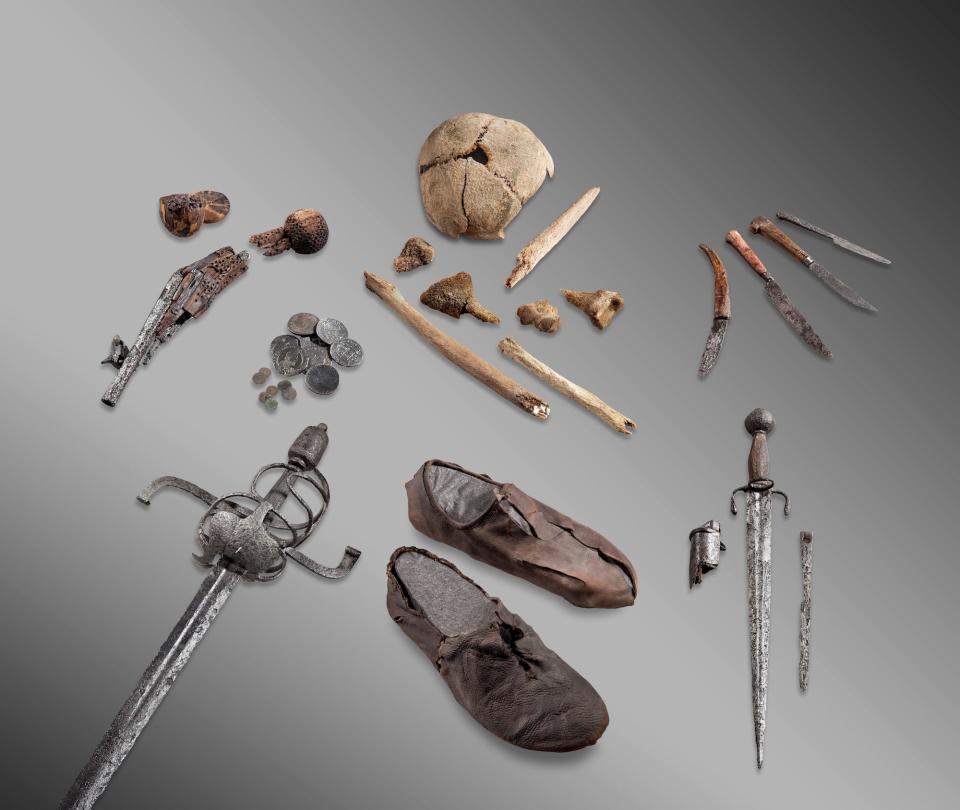

This wealthy traveler is a mystery that archaeologists believe they’ve solved.
Based on his fine clothes, coins from Northern Italy, and weapons from present-day Germany, the archaeologists think he was a merchant. Two mules whose remains were discovered nearby may have been carrying his wares.
Archaeologists suspect the man died in an accident, such as falling into a crevasse in the glacier.
He’s a remarkably detailed snapshot of an ancient economy that stretched across the Alps. For centuries, people have braved treacherous cols and glaciers to reach settlements on the other side of the mountains.
Some artifacts could carry long-extinct diseases such as the black plague.
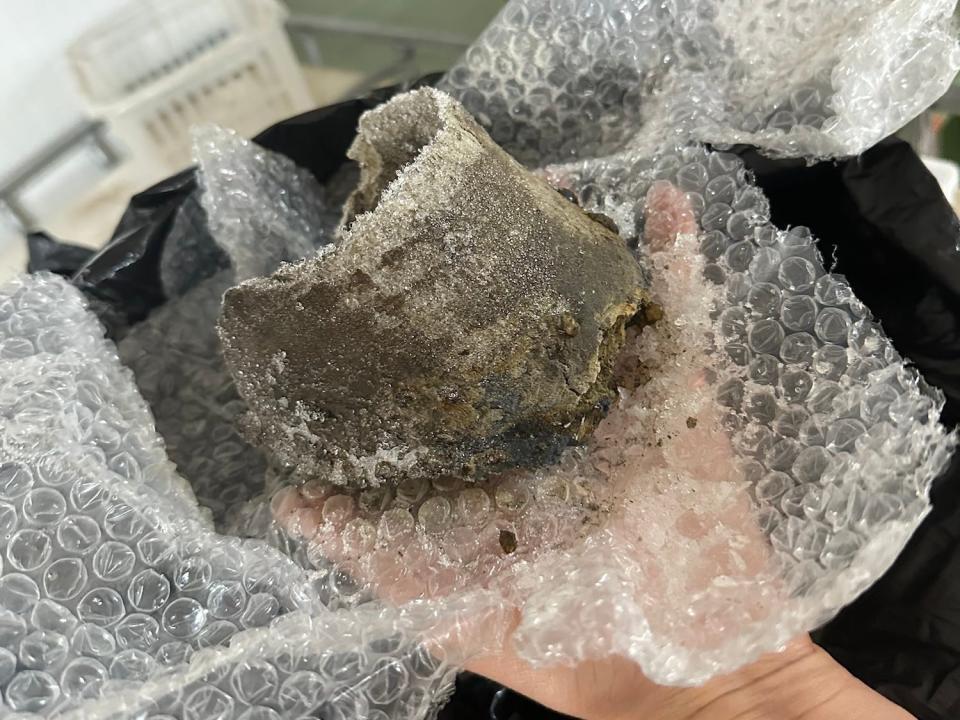

Archaeologists have to be careful and wash their hands after handling the remains of animals or people since they could carry viruses or other microbes that are still viable from being frozen.
Researchers have previously found active viruses frozen in Tibetan glaciers and Arctic permafrost, tens of thousands of years old. Those viruses were prehistoric and suited to plants or amoebas, but there are also more recent, human-adapted pathogens such as plague or smallpox that could easily be preserved in the ice.
There are relics in the Alps glaciers from the Middle Ages, including the peak of the black plague. Andenmatten told BI the Valais archaeologists hadn’t had any infections from ancient microbes, but he said he didn’t want to become an “archaeological experiment.”
“We know that in other regions, they have problems with that,” Andenmatten said.
For example, thawing permafrost in Siberia released anthrax that infected dozens of people and killed a child in 2016.
Nicod is convinced this wooden artifact is a handle for some kind of tool. It fits perfectly in his hand.
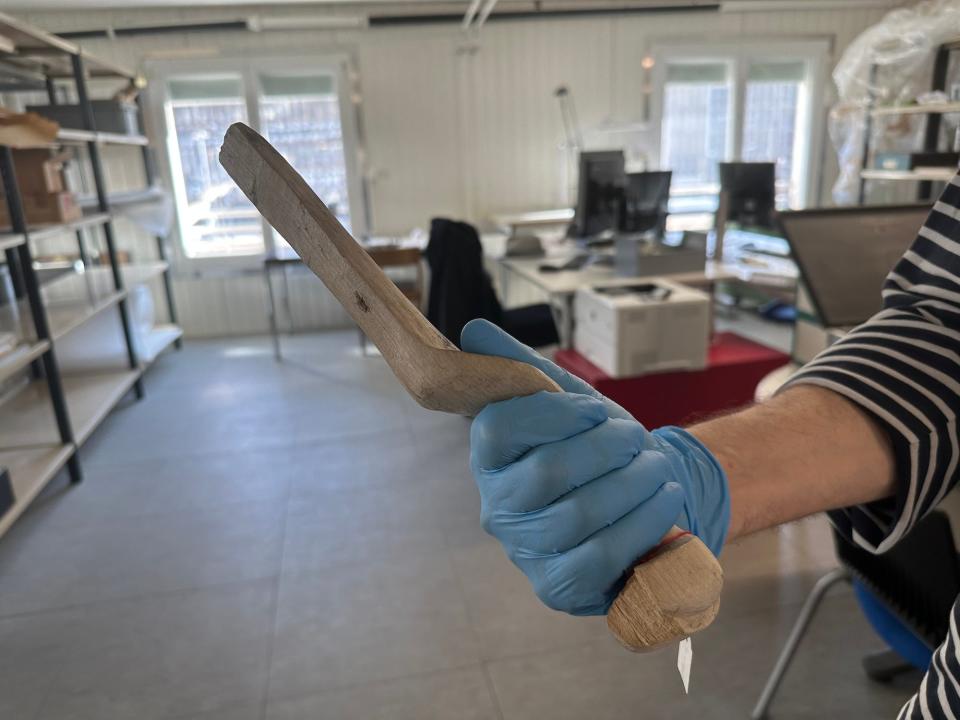

It’s from the Iron Age. Nicod speculated it was the handle of a hooked blade for cutting back plants. Whatever it is, it’s impeccably preserved.
“These are exceptional wooden objects that would have been destroyed elsewhere,” he said.
Many objects are vulnerable once the ice around them melts. Archaeologists have to hurry.
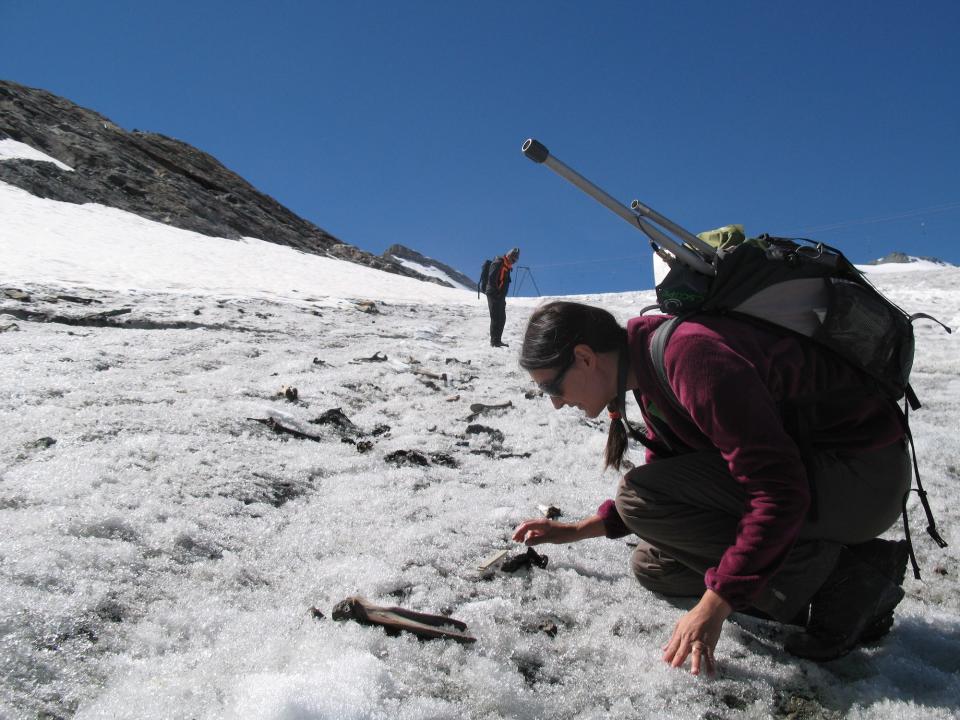

Once they melt out to the surface of a glacier, leather and other organic materials can be destroyed by the elements and the meltwater in just two years, Andenmatten said.
Some of the wood sticks from the Col Collon, for example, had fungus growing on them. In glacial archaeology, that’s an emergency. They had to dry the wood as quickly as possible, then put it in an anoxic (oxygen-deprived) chamber for several weeks to kill the fungus.
“You have to have a rapid response, which is problematic for glacial archaeology,” Andenmatten said.
To help save as many objects as possible, the archaeologists created an app for hikers to report their findings.
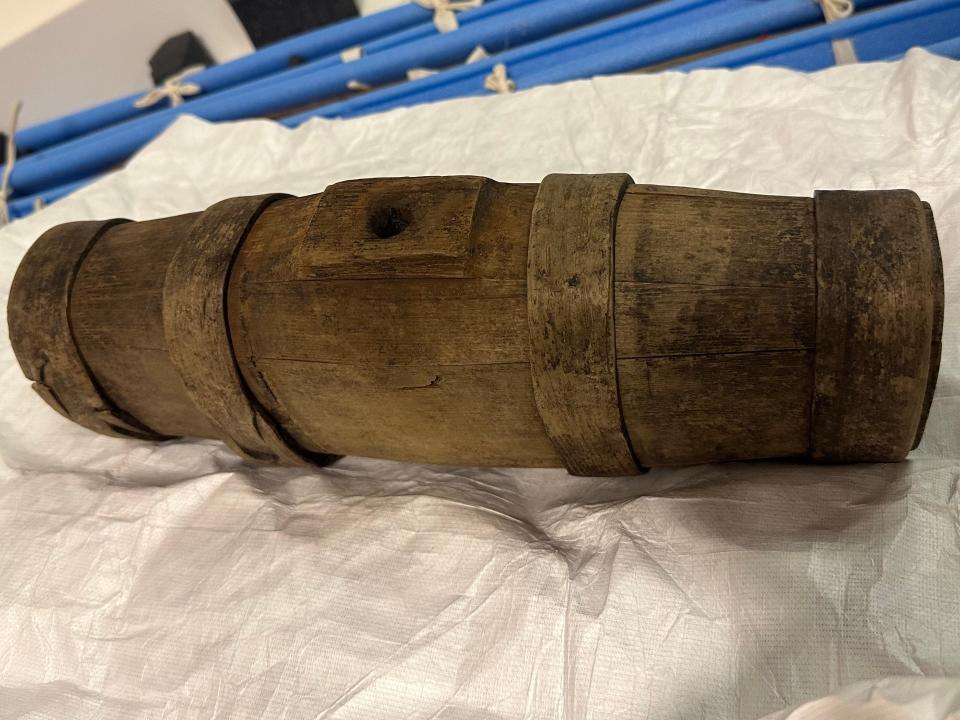

The IceWatcher app is an example of a growing practice of citizen science, with researchers recruiting enthusiasts to help them collect information in the field.
Hikers reported about 30 discoveries on the app in its first two years, Andenmatten said. About half of those discoveries were recent human remains or old bombs, which became the police’s responsibility, while the rest were interesting finds for the archaeologists, he said.
Some objects that melt out may not be found until they’ve decomposed.
“We say that glacial archaeology is to find a needle in an iceberg,” Andenmatten said.
“I think the citizen science is a good solution,” he added.
Read the original article on Business Insider
Source Agencies



